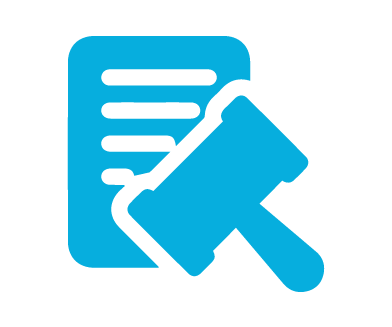FMS Market
Forex Trading

What is
Forex trading
Trading forex involves buying one currency and selling another simultaneously. Through careful analysis, traders predict the potential direction of currency prices and attempt to capture gains based on price fluctuations. There is no centralised exchange for forex trading.
Market liquidity for currency pairs depends on the forex trading sessions. For instance, the EUR/USD pair shows a lot of movement and liquidity during the confluence of the London and New York sessions.
Learning
An Example Of Trading
Leverage CFD Trading
Suppose you want to trade CFDs, where the underlying asset is the AUD/USD currency pair, also known as the “Aussie.”
Spread
The difference between these two rates is known as the spread. This includes the broker’s charges. The spread depends on your choice of currency pair and the forex broker. Licensed forex brokers who provide ECN (Electronic Communications Network) pricing can source price quotes from multiple liquidity providers in the market. This means they can offer the tightest spreads.
Going Long or Going Short
When you assume a long position in a currency pair, you buy a currency in the hopes that its price will rise (appreciate) in the future. This means you wish to buy the base currency and sell the quote currency, since you expect the base currency to appreciate with respect to the quote currency.
What is Liquidity In Forex Trading
Liquidity in the forex market refers to the ability of a currency to be bought or sold on demand. Can buy or sell large amounts of these currencies without causing any significant difference to the exchange rate. Liquidity fluctuates during trading sessions.
Liquid markets, such as forex, tend to fluctuate by smaller increments, since high liquidity means less volatility. However, high volatility can occur due to significant external events.
Bid/Ask Spread
Now, “bid” is the selling price. The difference between these two prices is the “spread.” Depending on how liquid your asset is and your choice of broker, the spread can be tight or wide.
Pip
Pip is an acronym for Point in Percentage. It represents the smallest amount of change in the rate of a currency pair and is a standardised unit. Pip value fluctuations have an effect on trading gains.
Lot Size
Lots are standardised position sizes for currencies. The forex market gives you the flexibility to trade according to your means and risk profile. The standard size for a lot is 100,000 units of the base currency. There also are mini, micro and nano lot sizes that contain 10,000, 1,000 and 100 units of the base currency, respectively.
The Concept Of Leverage In Forex Trading
Leverage in forex trading is a useful financial tool. It allows traders to gain greater exposure to market movements than they could otherwise afford. The leverage amount is provided by the forex broker. It is important to put in place robust risk management strategies while trading.
Learning
Majors, Minors and Exotics
Not all currency pairs are traded in large volumes. The US Dollar, being the world’s reserve currency, is definitely traded the most; although, over the years, its dominance has waned somewhat.
Minors
Then comes a category of minor currency pairs, otherwise known as cross-currency pairs. They are called so because they do not include the US Dollar. So, to convert one into the other, the US Dollar will need to act as a mediating currency.
A few of the minor pairs are:
- EUR/GBP
Euro/British Pound (aka Chunnel) - EUR/AUD
Euro/Australian Dollar - CHF/JPY
Swiss Franc/Japanese Yen - GBP/JPY
British Pound/Japanese Yen (aka Gopher) - GBP/CAD
British Pound/Canadian Dollar
Majors
Major currency pairs have the tightest spreads.
They are:
- EUR/USD
Euro/US Dollar (aka Fiber) - GBP/USD
British Pound/US Dollar (aka Cable) - USD/JPY
US Dollar/Japanese Yen (aka Ninja) - USD/CHF
US Dollar/Swiss Franc (aka Swissy) - CAD/USD
Canadian Dollar/US Dollar (aka Loonie) - AUD/USD
Australian Dollar/US Dollar (aka Aussie) - NZD/USD
New Zealand Dollar/US Dollar (aka Kiwi)
Exotics
Exotics can include a major currency with an emerging market currency. Trading in exotics is considered risky, since they tend to have low liquidity, wider spreads and political instabilities in these countries can make these currencies volatile.
Some examples are:
- EUR/TRY
Euro/Turkish Lira - USD/HKD
US Dollar/Hong Kong Dollar - AUD/MXN
Australian Dollar/Mexican Peso
In the brackets are the common nicknames for these currency pairs.
How to Trade Forex
With A Global Forex Broker
Take a look at these 5 steps to start trading Forex:
Step 1 – Educate Yourself
Learn all you can about the market. Understand how forex trading can benefit you and ascertain what time you can dedicate to it. Learn how to decipher market fundamentals and how to study charts.
Step 2 – Find a Regulated Broker
A regulated or licensed broker will provide a certain level of protection and provide you the necessary tools to trade efficiently. Open an FMS Markets demo account and access our educational materials and you can practice strategies in live market pricing, without risking capital.
Step 3 – Open a Margin Account
Decide on your risk/reward profile. How much of your capital can you afford to lose while trading? Based on that, choose your leverage. When you are a beginner, it is a good idea to start low.
Step 4 – Choose Your Trading Platform
Global licensed brokers offer some of the best forex technologies. Your long-term trading success will depend on swift trade execution, minimum slippage, fund security and efficient technical analysis. Choose a platform like MT5 that offers all these, while also allowing you to trade on mobile devices.
Step 5 – Don’t Forget About Risk Management
Lastly, never enter a trade without a defined stop loss. A stop loss is a trading order that automatically closes your trade when prices move in the wrong direction.












